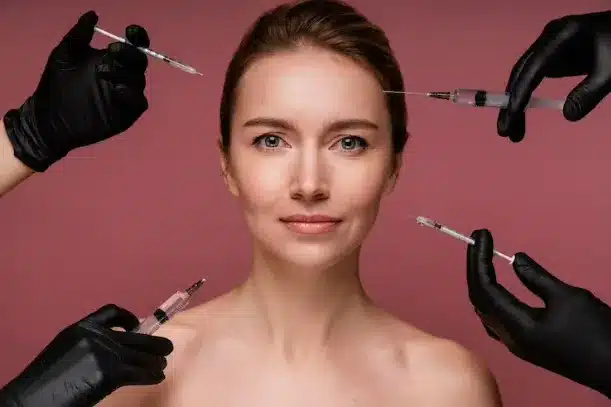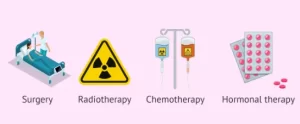In cosmetic and reconstructive surgery, face surgery can transform one’s appearance, boost self-confidence, and restore a sense of inner harmony. The artistry and precision of face surgery can address a wide range of facial concerns, from aging signs to congenital anomalies.
What Face Surgery Can Do?
Face surgery is a remarkable branch of cosmetic and reconstructive procedures that offers remarkable transformations. Some of the key improvements that can be achieved through face surgery include:
- Facial Rejuvenation: Face surgery, such as facelifts and neck lifts, can effectively combat the visible signs of aging by tightening loose skin, reducing wrinkles, and restoring a youthful appearance.
- Nasal Refinement: Rhinoplasty, or nose surgery, can alter the size, shape, and symmetry of the nose, harmonizing it with other facial features and enhancing facial balance.
- Eye Enhancement: Procedures like blepharoplasty (eyelid surgery) can rejuvenate the eye area by eliminating excess skin, reducing puffiness, and alleviating sagging, resulting in a more alert and youthful appearance.
- Chin and Cheek Contouring: Techniques like chin augmentation and cheek implants can refine the contours of the face, enhancing facial symmetry and creating a more proportionate appearance.
- Facial Reconstruction: Face surgery can restore function and aesthetics in individuals with congenital anomalies, facial trauma, or structural abnormalities, helping them regain confidence and improve their quality of life.
Different Types of Face Surgery
facial cosmetic surgery encompasses diverse procedures, each tailored to address specific concerns and goals. Some prominent types of face surgery include:
1. Facelift (Rhytidectomy)
A facelift targets sagging skin, deep wrinkles, and jowls in the lower face and neck region, providing a more youthful and rejuvenated appearance.
2. Rhinoplasty (Nose Surgery)
Rhinoplasty reshapes the nose by modifying its size, shape, and proportions, addressing functional and aesthetic concerns.
3. Blepharoplasty (Eyelid Surgery)
Blepharoplasty rejuvenates the appearance of the eyelids by removing excess skin, reducing under-eye bags, and alleviating droopiness, resulting in a more refreshed and youthful look.
4. Chin Augmentation
Chin augmentation involves enhancing the size and projection of the chin through implants or reshaping the existing bone, creating improved facial balance.
5. Otoplasty (Ear Surgery)
Otoplasty corrects ear deformities, such as prominent ears or abnormalities in shape, position, or proportion.
6. Brow Lift
A brow lift addresses sagging eyebrows and forehead wrinkles, smoothing the forehead and providing a more youthful and refreshed appearance.

Benefits of Face Surgery
Undergoing face surgery can bring about a multitude of benefits, both physical and emotional. Some notable advantages include:
- Youthful Rejuvenation: Procedures like facelifts and eyelid surgeries effectively reverse the signs of aging, restoring a more youthful and refreshed appearance.
- Improved Facial Harmony: Face surgery can create better harmony and balance among facial features, enhancing overall facial aesthetics.
- Correction of Facial Imbalances: Procedures like rhinoplasty and chin augmentation can correct facial asymmetry and structural irregularities, resulting in improved facial proportions.
People usually get facelifts to improve signs of aging and have a more youthful appearance. This may help increase your confidence and self-esteem. Cleveland clinic
Risks of Face Surgery
While facial cosmetic surgery can yield transformative outcomes, it is essential to be aware of potential risks and complications that may arise. These risks can include:
- Adverse Reactions to Anesthesia: Some individuals may experience allergic reactions or other complications related to anesthesia administration.
- Infection: Infections at the surgical site are a potential risk, which can be minimized through proper hygiene and adherence to post-operative care instructions.
Recovery Time from Face Surgery
The recovery period following face surgery varies depending on the specific procedure, individual healing characteristics, and the extent of surgery. While each patient’s experience may differ, a general timeline for recovery includes:
- Initial Days: The first few days after surgery are usually marked by swelling, bruising, and mild discomfort. Pain medication and cold compresses can help manage these symptoms.
- First Week: Bruising and swelling gradually subside during the first week, and the patient may begin to feel more comfortable. Stitches or sutures may be removed if necessary.
- Two to Three Weeks: Most visible bruising typically resolves within two to three weeks, and swelling continues to improve. Patients may gradually return to normal activities, following their surgeon’s guidelines.
- Several Months: The final results of face surgery become more apparent as residual swelling subsides over several months. It’s essential to practice proper skincare, sun protection and follow post-operative care instructions during this period.
Full recovery and optimal results may take several months to a year, depending on the individual and the extent of the procedure. Patient adherence to post-operative care guidelines is key to achieving the desired outcomes.
What Age Can Get Face Surgery?
The appropriate age for face surgery varies depending on the type of procedure and the individual’s unique circumstances. While there is no universal age limit, specific considerations apply:
- Facial Growth: For individuals seeking procedures like rhinoplasty, waiting until the face has finished growing is essential, typically around the late teens or early twenties.
- Aging Concerns: Procedures like facelifts are generally sought by individuals experiencing visible signs of aging, which typically become more pronounced in the late thirties or older.
- Health and Readiness: The patient’s overall health and emotional readiness for surgery are crucial factors. A thorough consultation with a facial surgeon will help determine if the patient is an appropriate candidate for the desired procedure.
Ultimately, the appropriate age for facial cosmetic surgery should be made in consultation with a qualified facial surgeon who can assess the individual’s situation and provide personalized recommendations.
To-Do and Not-to-Do Things After Face Surgery
Following the surgeon’s post-operative care instructions is essential to ensure a smooth recovery and optimal results. While specific instructions may vary, some general guidelines include:
To-Do:
- Rest and Recovery: Allow yourself ample time to rest and recover, as your surgeon prescribes. Follow the recommended activity restrictions during the initial healing period.
- Keep Incisions Clean: Follow proper wound care instructions to prevent infections. Keep incisions clean, avoid touching them with unclean hands, and apply prescribed ointments or dressings as directed.
- Manage Discomfort: Take prescribed medications for pain management as instructed. Apply cold compresses or ice packs to reduce swelling, if recommended.
- Attend Follow-up Appointments: Regularly attend follow-up appointments with your surgeon to monitor healing progress and address any concerns or questions.
- Practice Sun Protection: Protect your skin from direct sunlight, and wear sunblock or protective clothing when exposed to UV rays.
Not-to-Do:
- Engage in Strenuous Activities: Avoid rigorous physical activities or exercises that could strain or impact the healing incisions. Follow your surgeon’s instructions regarding the appropriate time to resume regular activities.
- Smoke or Use Tobacco Products: Smoking and tobacco use can impair healing and increase the risk of complications. It is crucial to refrain from smoking or using tobacco products during the recovery period.
- Disrupt or Remove Dressings: Avoid removing dressings or tampering with the incision site unless your surgeon advises. Let your surgeon or medical team handle any necessary dressings changes.
- Face surgery, a popular form of facial cosmetic surgery, has the potential to provide long-lasting benefits, such as a more balanced facial profile.
Summary:
Face surgery holds immense potential to transform one’s appearance, boosting self-confidence and addressing various aesthetic concerns. By combining artistry and medical expertise, facial surgeons can help individuals achieve a more youthful, balanced, and harmonious facial appearance.
Fun fact:
Did you know that while many opt for a facelift or rhinoplasty to redefine their facial aesthetics, there’s a growing trend in non-surgical facial rejuvenation? This includes treatments like laser therapy and chemical peels.
Plus, with the rise of plastic surgery tourism, many are jet-setting to foreign lands to get their desired look. Interestingly, post-operation, a meticulous skincare regimen becomes paramount to maintain the surgical results and maximize the benefits of treatments like dermal fillers. It’s a fascinating world of beauty and science combined.
FAQs
Q1: Is face surgery painful? A: it is performed under anesthesia, ensuring patient comfort. After surgery, mild discomfort can be managed with medication.
Q2: How long do face surgery results last? A: Results vary but are generally long-lasting and can be enjoyed for years.




